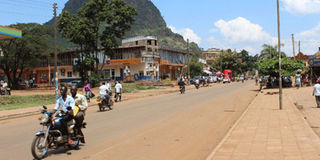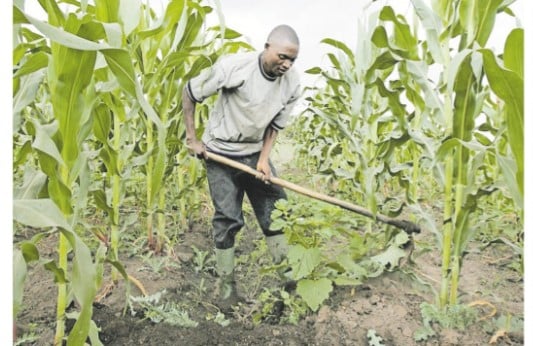Prime
Drive for Tororo City better option than dividing district

A boda boda cyclist in Tororo Municipality. Tororo Municipality, at the heart of the dispute between the Jopadhola and Iteso, is situated at the foot of the imposing Tororo Rock. FILE PHOTO
What you need to know:
- Bigger picture. Both West Budama and Tororo County have contributed towards the expansion of Tororo Town.
- The people of Tororo are looking forward to having Tororo City.
- Both sides should sacrifice and expand the municipality, Raphael Owere Onyango writes.
Before independence in 1962, present day Tororo District headquarters was the head office for Budama District. After independence, Bukedi District continued to have its headquarters in Tororo.
Later on, Bukedi District was renamed Tororo, with its headquarters in present day Tororo Municipality. Tororo District is thus the mother of several districts such as Busia, Pallisa, Budaka, Kibuku and Butaleja.
In each case, as it has been elsewhere in the country, when a county requests to be given a district status, they choose their new headquarters and move away, leaving behind the mother headquarters.
Tororo District now comprises five political constituencies; West Budama North, West Budama South, Tororo Municipality, Tororo County North and Tororo County South.
The people of Tororo County have for some time now been asking to be granted a district, claiming that the Jopadhola suppress them and so they need a district for the Iteso.
In 2006, a one Omasete ate a live rat in front of President Museveni to demonstrate that the Iteso and Jopadhola are not the same, and therefore should not coexist in the same district. That same year, Tororo County was supposed to be given a district.
And as expected, they were supposed to leave Tororo and decide on their new district headquarters. Consequently, that would also determine the name of their new district.
But to everybody’s surprise, they refused the new district because they wanted to go with Tororo Municipality. They wanted the people of West Budama to leave Tororo Municipality and go and establish their district headquarters in Kisoko.
Awkward demand
This was an awkward demand that could set a new and dangerous precedent in Uganda. The people of West Budama explained to them that they had not asked for a district and, therefore, could not leave their headquarters.
The matter became very contentious. At one point it was proposed in Parliament that the name Tororo District be erased. But Makerere law don, Prof Joe Oloka-Onyango, together with a team of Jopadhola lawyers explained to MPs the constitutional crisis that the country would be plunged into if Tororo District ceased to exist. This was tantamount to destroying Uganda as a nation, as stipulated in the 1995 Constitution.
Today, the same clique from Tororo County is agitating for a new district. They are towing the same old futile line of taking Tororo Municipality with them, and ordering the Jopadhola to go to Nagongera (not Kisoko this time).
The Iteso of Tororo are demanding a district, saying the Jopadhola marginalise them. But this is quite unusual; there is no policy in Uganda for a tribal district. Any tribe can live in any district. There are many Iteso and Jopadhola in other districts such as Mayuge, Kayunga and Bugiri.
In Kayunga alone, there are about 11,000 Iteso and 11,000 Jopadhola. Can the Iteso ask for their own district in Kayunga because they are many there?
A district for the Iteso in Tororo is not feasible. What they should ask for is a district for Tororo County, not one for the Iteso. The composition of people in Tororo County is quite heterogeneous. Tororo County, though dominated by Iteso, has a very significant number of Jopadhola.
Nearly one half of the people of Tororo County speak Dhopadhola. Many Iteso are products of Jopadhola mothers and grandmothers. Likewise, many Iteso live comfortably in West Budama. Furthermore, there are no physical boundaries on the ground which separates Jopadhola and Iteso inside Tororo County.
“Tororo Municipality is part of Tororo County,” commentators from Tororo County say. This is ridiculous. A county is an equivalent of a municipality. How can a county be a part of another county? They say this is according to the 1947 boundary. At that time, Tororo Municipality didn’t exist. There was instead a town board, an equivalent of a parish. The town board expanded and grew into a town council, and later became a municipality.
Both West Budama and Tororo County have contributed towards the expansion of Tororo Town. The people of Tororo are looking forward to having Tororo City. Both sides should sacrifice and expand the municipality. The two sub-counties that surround the town can join the municipality in preparation for a city status.
Rubongi sub-county has made the initiative, but it has been misunderstood and resisted.
The people of Tororo County have a right to ask for a district. However, this should be done within the provisions of the law, and with mutual respect of one another. If the people Tororo County accept to go for a new district headquarters of their own choice, they can go.
But their demand to carry Tororo Municipality with them and order the Jopadhola to go to Nagongera is highly provocative and irritating to the Jopadhola.
Long live Tororo!
Background
A bit of history here will suffice. The ancestors of the Jopadhola settled in Tororo between 1400 and 1500 AD (Oboth – Ofumbi, 1959).
They occupied the present day Tororo District, which one time was called Budama District. It had East Budama and West Budama. The British colonialists, led by their Muganda agent, Semei Kakungulu, called the Jopadhola Badama and their place Budama.
The Jopadhola, however, don’t like this name Budama. They prefer to be called Jopadhola (the people of Adhola), and their place, Padhola.
The Iteso arrived in Tororo around 1850 AD, long after the Jopadhola had settled in Padhola. They were introduced to the Jopadhola chiefs by Oguti, an Itesot said to be from Kachumbula, who had run away from his parents.
Oguti was later adopted by Milweni of Bendo clan. When the Iteso began to arrive in East Budama, they found Oguti there. He recognised them as his own, and asked for permission from his elders to allow them stay with him.
The Itesots were received gladly by the Jopadhola. They became very good allies. Since they had a lot of cattle and paid dowry with a lot of cattle, they were allowed to marry many Jopadhola ladies. That is why in almost every family of the Iteso they have Jopadhola blood. Up to date, there are few tribes that co-exist and love each other like the Jopadhola and Iteso.
It is only a few Iteso who for some political and/or economic gain are causing confusion in Tororo.
The writer is a retired Jago (prime minister) Tieng Adhola cultural institution




